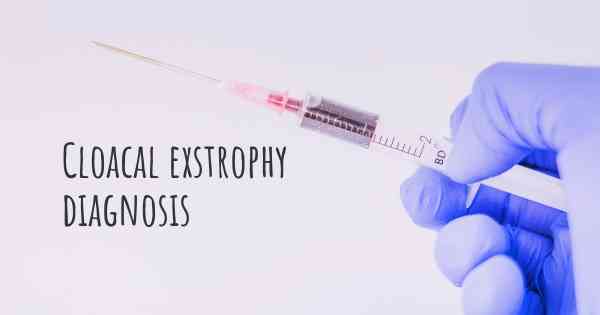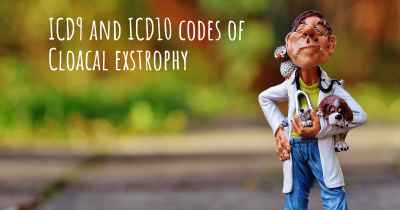How is Cloacal exstrophy diagnosed?
See how Cloacal exstrophy is diagnosed. Which specialists are essential to meet, what tests are needed and other useful information for the diagnosis of Cloacal exstrophy

Diagnosis of Cloacal Exstrophy
Cloacal exstrophy is a rare congenital condition that affects the development of the abdominal and pelvic organs. It is characterized by a complex malformation involving the bladder, intestines, and genitalia. Diagnosing cloacal exstrophy typically involves a combination of prenatal ultrasound, physical examination, and further diagnostic tests.
Prenatal Ultrasound
Prenatal ultrasound is often the first step in diagnosing cloacal exstrophy. It is a non-invasive imaging technique that uses sound waves to create images of the developing fetus. During the ultrasound, the healthcare provider will examine the abdominal and pelvic region of the fetus to look for any abnormalities. In the case of cloacal exstrophy, certain characteristic features may be observed, such as:
- Bladder Exstrophy: The bladder may be seen outside the abdominal wall.
- Abdominal Wall Defect: A gap or separation in the abdominal wall may be visible.
- Malformation of Genitalia: The genitalia may appear abnormal or fused together.
- Intestinal Abnormalities: The intestines may be displaced or protruding.
If these findings are suggestive of cloacal exstrophy, further diagnostic tests and consultations with specialists will be recommended.
Physical Examination
After the prenatal ultrasound, a physical examination of the newborn is conducted to confirm the diagnosis of cloacal exstrophy. The healthcare provider will carefully examine the external genitalia, abdominal wall, and anus. The following signs may be observed:
- Bladder Exstrophy: The bladder may be visible outside the body, with the urethra opening on the surface.
- Abdominal Wall Defect: A gap or separation in the abdominal wall may be palpable.
- Intestinal Abnormalities: The intestines may be visible or palpable, indicating their malposition.
- Genitalia Malformation: The genitalia may be fused, with an abnormal appearance.
If these physical findings are present, the healthcare provider will refer the newborn to a specialist for further evaluation and management.
Further Diagnostic Tests
Additional diagnostic tests are necessary to assess the extent of the malformation and plan appropriate treatment. These tests may include:
- Imaging Studies: X-rays, magnetic resonance imaging (MRI), or computed tomography (CT) scans may be performed to visualize the internal structures and assess the extent of the malformation.
- Genitourinary Studies: Voiding cystourethrography (VCUG) and urodynamic studies may be conducted to evaluate the bladder and urinary tract function.
- Gastrointestinal Studies: Imaging or contrast studies may be used to assess the gastrointestinal tract and identify any associated abnormalities.
- Genetic Testing: In some cases, genetic testing may be recommended to identify any underlying genetic abnormalities or syndromes associated with cloacal exstrophy.
These diagnostic tests help in determining the specific anatomical abnormalities, functional impairments, and associated conditions, which are crucial for planning the most appropriate treatment approach.
Consultation with Specialists
Given the complexity of cloacal exstrophy, a multidisciplinary team of specialists is involved in the diagnosis and management. This team may include pediatric surgeons, urologists, gastroenterologists, geneticists, and other healthcare professionals with expertise in managing congenital malformations. Consultation with these specialists is essential to confirm the diagnosis, assess the overall health of the newborn, and develop a comprehensive treatment plan.
In conclusion, diagnosing cloacal exstrophy involves a combination of prenatal ultrasound, physical examination, and further diagnostic tests. Prenatal ultrasound can provide initial indications of the condition, while physical examination confirms the diagnosis after birth. Additional diagnostic tests, such as imaging studies and genitourinary/gastrointestinal studies, are performed to assess the extent of the malformation. Consultation with a multidisciplinary team of specialists is crucial for accurate diagnosis and appropriate management of cloacal exstrophy.








